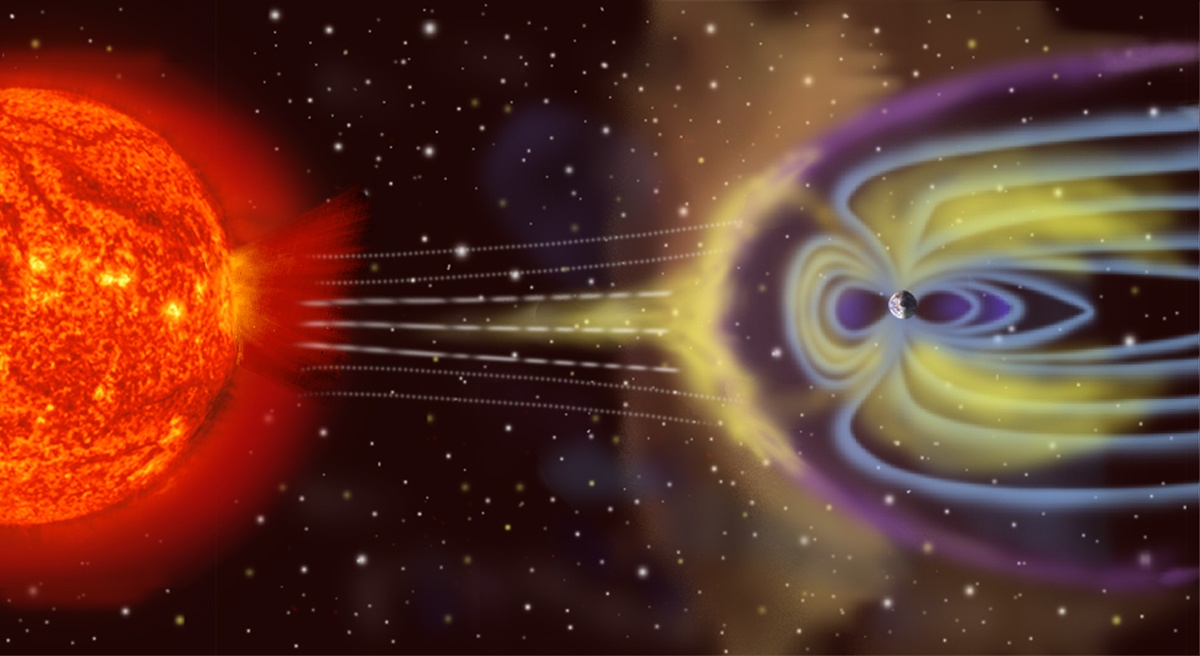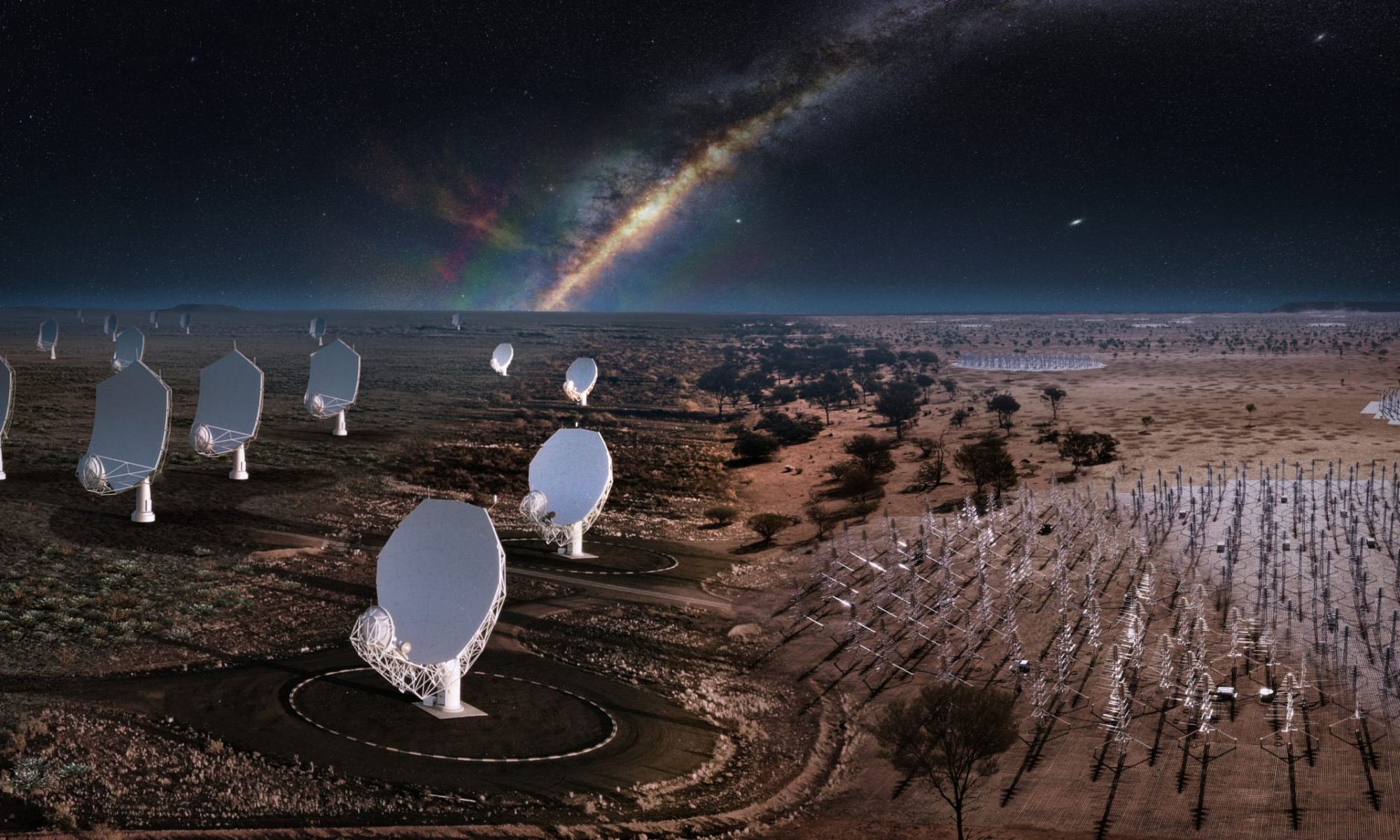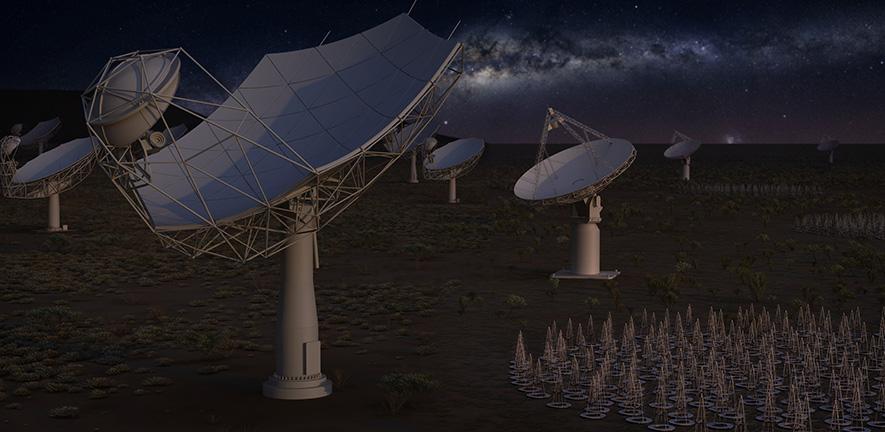Life on Earth would not be possible without food, water, light, a breathable atmosphere and surprisingly, a magnetic field. Without it, Earth, and its inhabitants would be subjected to the harmful radiation from space making life here, impossible. If we find exoplanets with similar magnetospheres then those worlds may well be habitable. The Square Kilometer Array (SKA) which is still under construction should be able to detect such magnetospheres from radio emissions giving us real insight into our exoplanet cousins.
Continue reading “Measuring Exoplanetary Magnetospheres with the Square Kilometer Array”What’s Causing the Mysterious Radio Waves Coming From the Center of the Milky Way?

The center of the Milky Way is a mysterious place. Astronomers think there’s a supermassive black hole there, though it could be dark matter instead. The region is densely packed with stars, dominated by red giants. And because of all the dust between Earth and the galactic center, we can’t see anything with visible light, ultraviolet light, or low-energy x-rays.
But we can detect radio waves, and there are some unexplained ones coming from the center of the galaxy, and adding to the mystery.
Continue reading “What’s Causing the Mysterious Radio Waves Coming From the Center of the Milky Way?”The Square Kilometer Array has Gotten the Official Green Light to Begin Construction
In Australia and South Africa, there are a series of radio telescopes that will be soon joined by a number of newly-constructed facilities to form the Square Kilometer Array (SKA). Once established, the SKA will have a collecting area that measures a million square meters (close to 2 million square yards). It will also be 50 times more sensitive than any radio telescope currently in operation, and be able to conduct surveys ten thousand times faster.
During a historic meeting that took place on June 29th, 2021, the member states that make up the SKAO Council voted to commence construction. By the late 2020s, when it’s expected to gather its first light, the array will consist of thousands of dishes and up to a million low-frequency antennas. These will enable it to conduct all kinds of scientific operations, from scanning the earliest periods in the Universe to searching for extraterrestrial intelligence (SETI).
Continue reading “The Square Kilometer Array has Gotten the Official Green Light to Begin Construction”Radio Astronomers are Worried About Mega-Constellations and the Square Kilometer Array

In the coming years, a number of next-generation observatories and arrays will become operational. These facilities will make major contributions to multiple fields of astronomy: exploring the mysteries of the early Universe, studying gravitational waves, determining the role of dark matter and dark energy in cosmic evolution, and directly image “Earth-like” exoplanets.
Unfortunately, this revolutionary development in astronomy may be going up against another major project: the creation of mega-constellations. Because of this, the SKA Organization (SKAO) – which oversees the international Square Kilometre Array (SKA) – is insisting that corrective measures be taken so satellites won’t interfere with its radio observations once it’s operational.
Continue reading “Radio Astronomers are Worried About Mega-Constellations and the Square Kilometer Array”This is the Milky Way’s Magnetic Field
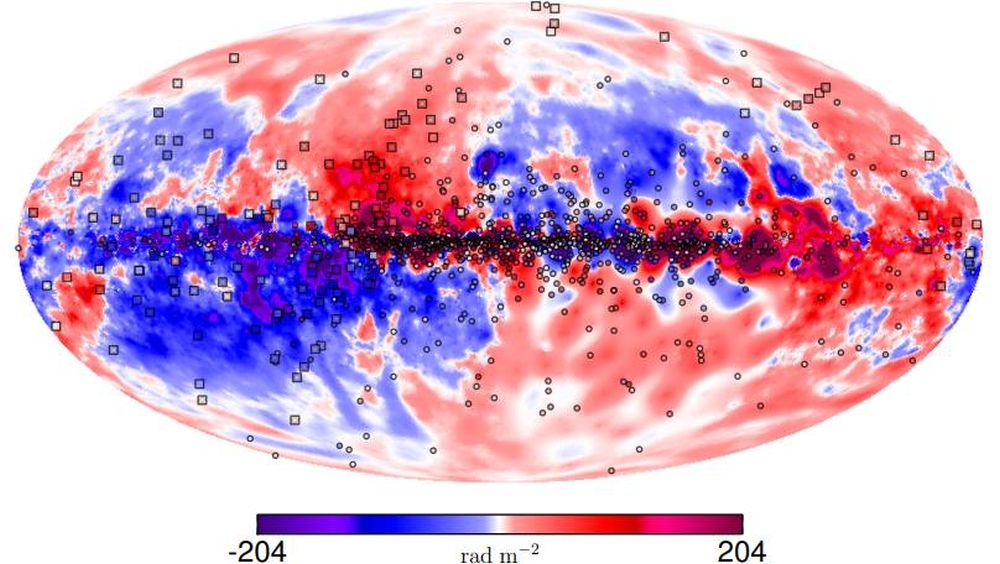
The Milky Way galaxy has its own magnetic field. It’s extremely weak compared to Earth’s; thousands of times weaker, in fact. But astronomers want to know more about it because of what it can tell us about star formation, cosmic rays, and a host of other astrophysical processes.
Continue reading “This is the Milky Way’s Magnetic Field”A Supercomputer has been Designed to run the World’s Largest Radio Telescope
When complete, the Square Kilometer Array (SKA) will be the largest radio telescope array in the entire world. The result of decades of work involving 40 institutions in 11 countries, the SKA will allow astronomers to monitor the sky in unprecedented detail and survey it much faster than with any system currently in existence.
Such a large array will naturally be responsible for gathering an unprecedented amount of data on a regular basis. To sort through all this data, the “brain” for this massive array will consist of two supercomputers. Recently, the SKA’s Science Data Processor (SDP) consortium concluded their engineering design work on one of these supercomputers.
Continue reading “A Supercomputer has been Designed to run the World’s Largest Radio Telescope”Australian astronomers have been able to double the number of mysterious fast radio bursts discovered so far

Fast Radio Bursts (FRBs) have become a major focus of research in the past decade. In radio astronomy, this phenomenon refers to transient radio pulses coming from distant cosmological sources, which typically last only a few milliseconds on average. Since the first event was detected in 2007 (the “Lorimer Burst”), thirty four FRBs have been observed, but scientists are still not sure what causes them.
With theories ranging from exploding stars and black holes to pulsars and magnetars – and even messages coming from extra-terrestrial intelligences (ETIs) – astronomers have been determined to learn more about these strange signals. And thanks to a new study by a team of Australian researchers, who used the Australia Square Kilometer Array Pathfinder (ASKAP), the number of known sources of FRBs has almost doubled.
The Closest Supernova Since 1604 Is Hissing At Us
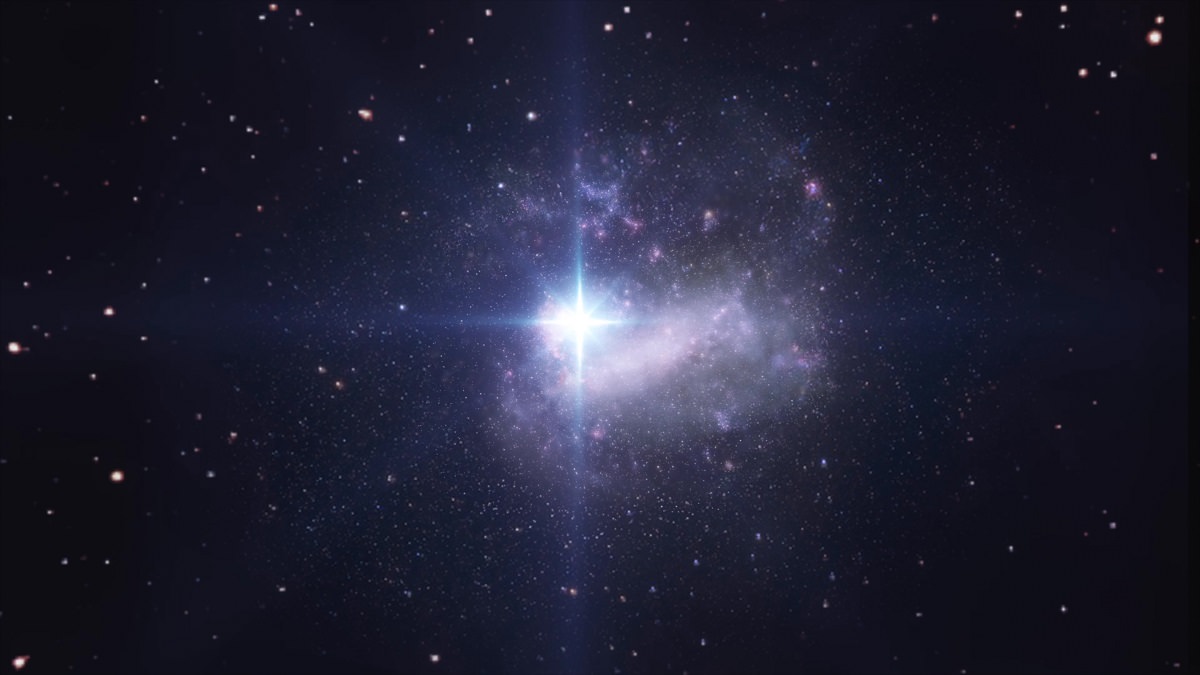
Thirty years ago, a star that went by the designation of SN 1987A collapsed spectacularly, creating a supernova that was visible from Earth. This was the largest supernova to be visible to the naked eye since Kepler’s Supernova in 1604. Today, this supernova remnant (which is located approximately 168,000 light-years away) is being used by astronomers in the Australian Outback to help refine our understanding of stellar explosions.
Led by a student from the University of Sydney, this international research team is observing the remnant at the lowest-ever radio frequencies. Previously, astronomers knew much about the star’s immediate past by studying the effect the star’s collapse had on the neighboring Large Magellanic Cloud. But by detecting the star’s faintest hisses of radio static, the team was able to observe a great deal more of its history.
The team’s findings, which were published yesterday in the journal Monthly Notices of the Royal Astronomical Society, detail how the astronomers were able to look millions of years farther back in time. Prior to this, astronomers could only observe a tiny fraction of the star’s life cycle before it exploded – 20,000 years (or 0.1%) of its multi-million year life span.
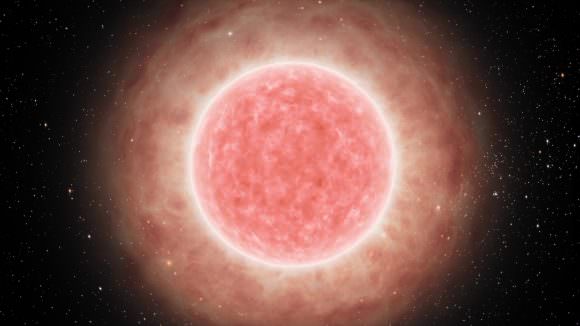
As such, they were only able to see the star when it was in its final, blue supergiant phase. But with the help of the Murchison Widefield Array (MWA) – a low-frequency radio telescope located at the Murchison Radio-astronomy Observatory (MRO) in the West Australian desert – the radio astronomers were able to see all the way back to when the star was still in its long-lasting red supergiant phase.
In so doing, they were able to observe some interesting things about how this star behaved leading up to the final phase in its life. For instance, they found that SN 1987A lost its matter at a slower rate during its red supergiant phase than was previously assumed. They also observed that it generated slower than expected winds during this period, which pushed into its surrounding environment.
Joseph Callingham, a PhD candidate with the University of Sydney and the ARC Center of Excellence for All-Sky Astrophysics (CAASTRO), is the leader of this research effort. As he stated in a recent RAS press release:
“Just like excavating and studying ancient ruins that teach us about the life of a past civilization, my colleagues and I have used low-frequency radio observations as a window into the star’s life. Our new data improves our knowledge of the composition of space in the region of SN 1987A; we can now go back to our simulations and tweak them, to better reconstruct the physics of supernova explosions.”
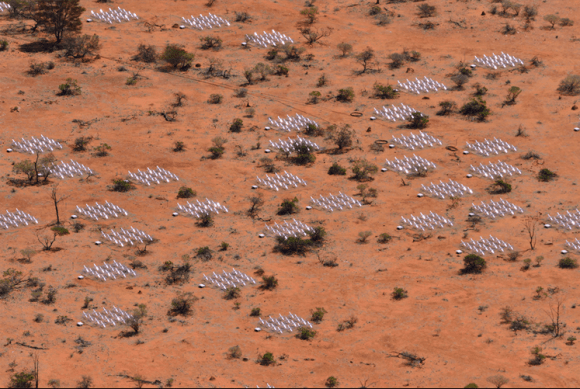
The key to finding this new information was the quiet and (some would say) temperamental conditions that the MWA requires to do its thing. Like all radio telescopes, the MWA is located in a remote area to avoid interference from local radio sources, not to mention a dry and elevated area to avoid interference from atmospheric water vapor.
As Professor Gaensler – the former CAASTRO Director and the supervisor of the project – explained, such methods allow for impressive new views of the Universe. “Nobody knew what was happening at low radio frequencies,” he said, “because the signals from our own earthbound FM radio drown out the faint signals from space. Now, by studying the strength of the radio signal, astronomers for the first time can calculate how dense the surrounding gas is, and thus understand the environment of the star before it died.”
These findings will likely help astronomers to understand the life cycle of stars better, which will come in handy when trying to determine what our Sun has in store for us down the road. Further applications will include the hunt for extra-terrestrial life, with astronomers being able to make more accurate estimates on how stellar evolution could effect the odds of life forming in different star systems.
In addition to being home to the MWA, the Murchison Radio-astronomy Observatory (MRO) is also the planned site of the future Square Kilometer Array (SKA). The MWA is one of three telescopes – along with the South African MeerKAT array and the Australian SKA Pathfinder (ASKAP) array – that are designated as a Precursor for the SKA.
Further Reading: Royal Astronomical Society
The Dutch Are Going To The Moon With The Chinese
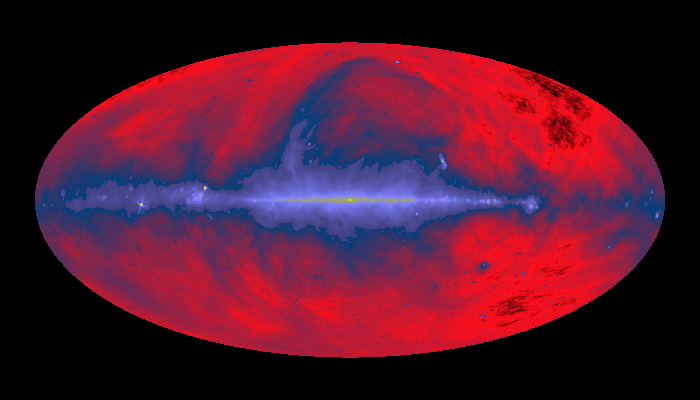
One of the defining characteristics of the New Space era is partnerships. Whether it is between the private and public sector, different space agencies, or different institutions across the world, collaboration has become the cornerstone to success. Consider the recent agreement between the Netherlands Space Office (NSO) and the Chinese National Space Agency (CNSA) that was announced earlier this week.
In an agreement made possible by the Memorandum of Understanding (MoU) signed in 2015 between the Netherlands and China, a Dutch-built radio antenna will travel to the Moon aboard the Chinese Chang’e 4 satellite, which is scheduled to launch in 2018. Once the lunar exploration mission reaches the Moon, it will deposit the radio antenna on the far side, where it will begin to provide scientists with fascinating new views of the Universe.
The radio antenna itself is also the result of collaboration, between scientists from Radboud University, the Netherlands Institute for Radio Astronomy (ASTRON) and the small satellite company Innovative Solutions in Space (ISIS). After years of research and development, these three organizations have produced an instrument which they hope will usher in a new era of radio astronomy.
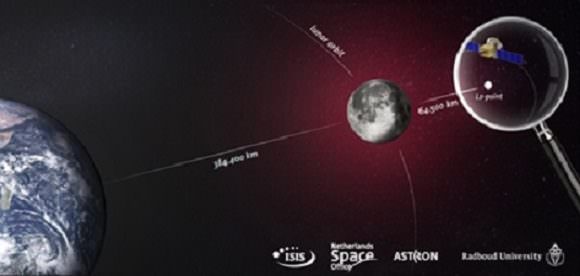
Essentially, radio astronomy involves the study of celestial objects – ranging from stars and galaxies to pulsars, quasars, masers and the Cosmic Microwave Background (CMB) – at radio frequencies. Using radio antennas, radio telescopes, and radio interferometers, this method allows for the study of objects that might otherwise be invisible or hidden in other parts of the electromagnetic spectrum.
One drawback of radio astronomy is the potential for interference. Since only certain wavelengths can pass through the Earth’s atmosphere, and local radio wave sources can throw off readings, radio antennas are usually located in remote areas of the world. A good example of this is the Very-Long Baseline Array (VLBA) located across the US, and the Square Kilometer Array (SKA) under construction in Australia and South Africa.
One other solution is to place radio antennas in space, where they will not be subject to interference or local radio sources. The antenna being produced by Radbound, ASTRON and ISIS is being delivered to the far side of the Moon for just this reason. As the latest space-based radio antenna to be deployed, it will be able to search the cosmos in ways Earth-based arrays cannot, looking for vital clues to the origins of the universe.
As Heino Falke – a professor of Astroparticle Physics and Radio Astronomy at Radboud – explained in a University press release, the deployment of this radio antenna on the far side of the Moon will be an historic achievement:
“Radio astronomers study the universe using radio waves, light coming from stars and planets, for example, which is not visible with the naked eye. We can receive almost all celestial radio wave frequencies here on Earth. We cannot detect radio waves below 30 MHz, however, as these are blocked by our atmosphere. It is these frequencies in particular that contain information about the early universe, which is why we want to measure them.”
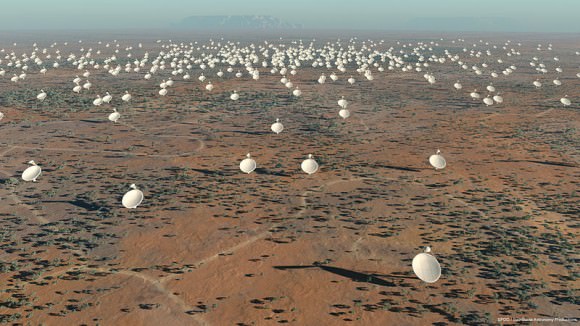
As it stands, very little is known about this part of the electromagnetic spectrum. As a result, the Dutch radio antenna could be the first to provide information on the development of the earliest structures in the Universe. It is also the first instrument to be sent into space as part of a Chinese space mission.
Alongside Heino Falcke, Marc Klein Wolt – the director of the Radboud Radio Lab – is one of the scientific advisors for the project. For years, he and Falcke have been working towards the deployment of this radio antenna, and have high hopes for the project. As Professor Wolt said about the scientific package he is helping to create:
“The instrument we are developing will be a precursor to a future radio telescope in space. We will ultimately need such a facility to map the early universe and to provide information on the development of the earliest structures in it, like stars and galaxies.”
Together with engineers from ASTRON and ISIS, the Dutch team has accumulated a great deal of expertise from their years working on other radio astronomy projects, which includes experience working on the Low Frequency Array (LOFAR) and the development of the Square Kilometre Array, all of which is being put to work on this new project.
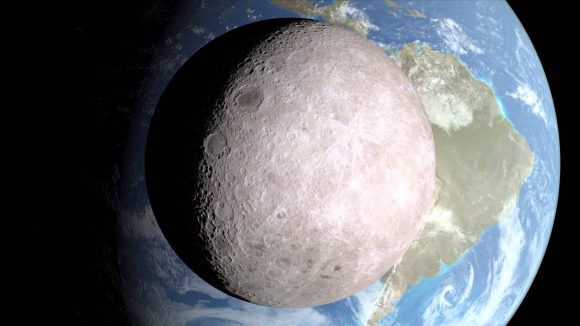
Other tasks that this antenna will perform include monitoring space for solar storms, which are known to have a significant impact on telecommunications here on Earth. With a radio antenna on the far side of the Moon, astronomers will be able to better predict such events and prepare for them in advance.
Another benefit will be the ability to measure strong radio pulses from gas giants like Jupiter and Saturn, which will help us to learn more about their rotational speed. Combined with the recent ESO efforts to map Jupiter at IR frequencies, and the data that is already arriving from the Juno mission, this data is likely to lead to some major breakthroughs in our understanding of this mysterious planet.
Last, but certainly not least, the Dutch team wants to create the first map of the early Universe using low-frequency radio data. This map is expected to take shape after two years, once the Moon has completed a few full rotations around the Earth and computer analysis can be completed.
It is also expected that such a map will provide scientists with additional evidence that confirms the Standard Model of Big Bang cosmology (aka. the Lambda CDM model). As with other projects currently in the works, the results are likely to be exciting and groundbreaking!
Further Reading: Radbound University
Missing Matter Found! Fast Radio Bursts Confirm Cosmological Model
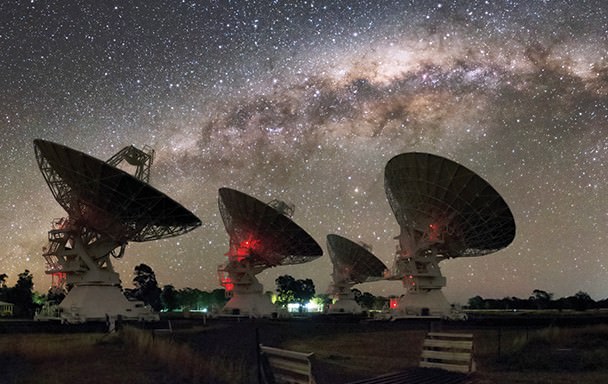
In July of 2012, researchers at the CERN laboratory made history when they announced the discovery of the Higgs Boson. Though its existence had been hypothesized for over half a century, confirming its existence was a major boon for scientists. In discovering this one particle, the researchers were also able to confirm the Standard Model of particle physics. Much the same is true of our current cosmological model.
For decades, scientists been going by the theory that the Universe consists of about 70% dark energy, 25% dark matter and 5% “luminous matter” – i.e. the matter we can see. But even when all the visible matter is added up, there is a discrepancy where much of it is still considered “missing”. But thanks to the efforts of a team from the Commonwealth Scientific and Industrial Research Organization (CSIRO), scientists now know that we have it right.
This began on April 18th, 2015, when the CSIRO’s Parkes Observatory in Australia detected a fast radio burst (FRB) coming from space. An international alert was immediately issued, and within a few hours, telescopes all around the world were looking for the signal. The CSIRO team began tracking it as well with the Australian Telescope Compact Array (ATCA) located at the Paul Wild Observatory (north of Parkes).
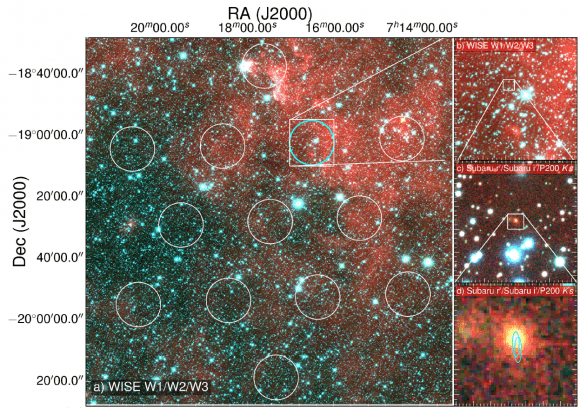
With the help of the National Astronomical Observatory of Japan’s (NAOJ) Subaru telescope in Hawaii, they were able to pinpoint where the signal was coming from. As the CSIRO team described in a paper submitted to Nature, they identified the source, which was an elliptical galaxy located 6 billion light years from Earth.
This was an historic accomplishment, since pinpointing the source of FRBs have never before been possible. Not only do the signals last mere milliseconds, but they are also subject to dispersion – i.e. a delay caused by how much material they pass through. And while FRBs have been detected in the past, the teams tracking them have only been able to obtain measurements of the dispersion, but never the signal’s redshift.
Redshift occurs as a result of an object moving away at relativistic speeds (a portion of the speed of light). For decades, scientists have been using it to determine how fast other galaxies are moving away from our own, and hence the rate of expansion of the Universe. Relying on optical data obtained by the Subaru telescope, the CSIRO team was able to obtain both the dispersion and the redshift data from this signal.
As stated in their paper, this information yielded a “direct measurement of the cosmic density of ionized baryons in the intergalactic medium”. Or, as Dr. Simon Johnston – of the CSIRO’s Astronomy and Space Science division and the co-author of the study – explains, the team was not only to locate the source of the signal, but also obtain measurements which confirmed the distribution of matter in the Universe.
“Until now, the dispersion measure is all we had,” he said. “By also having a distance we can now measure how dense the material is between the point of origin and Earth, and compare that with the current model of the distribution of matter in the Universe. Essentially this lets us weigh the Universe, or at least the normal matter it contains.”
Dr. Evan Keane of the SKA Organization, and lead author on the paper, was similarly enthused about the team’s discovery. “[W]e have found the missing matter,” he said. “It’s the first time a fast radio burst has been used to conduct a cosmological measurement.”
As already noted, FRB signals are quite rare, and only 16 have been detected in the past. Most of these were found by sifting through data months or years after the signal was detected, by which time it would be impossible for any follow-up observations. To address this, Dr. Keane and his team developed a system to detect FRBs and immediately alert other telescopes, so that the source could be pinpointed.
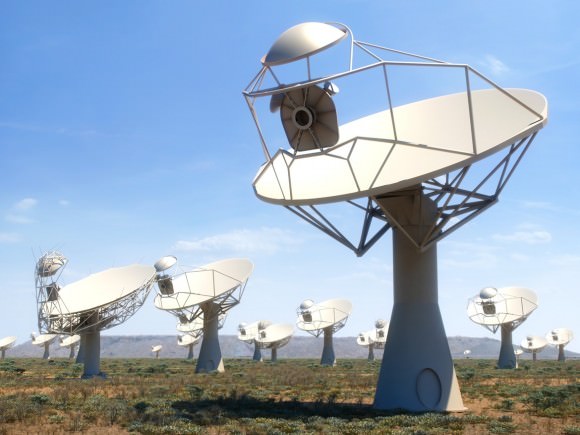
It is known as the Square Kilometer Array (SKA), an international effort led by the SKA Organization to build the world’s largest radio telescope. Combining extreme sensitivity, resolution and a wide field of view, the SKA is expected to trace many FRBs to their host galaxies. In so doing, it is hoped the array will provide more measurements confirming the distribution of matter in the Universe, as well as more information on dark energy.
In the end, these and other discoveries by the SKA could have far-reaching consequences. Knowing the distribution of matter in the universe, and improving our understanding of dark matter (and perhaps even dark energy) could go a long way towards developing a Theory Of Everything (TOE). And knowing how all the fundamental forces of our universe interact will go a long way to finally knowing with certainty how it came to be.
These are exciting time indeed. With every step, we are peeling back the layers of our universe!
Further Reading: CSIRO, SKA Organization, Nature.

